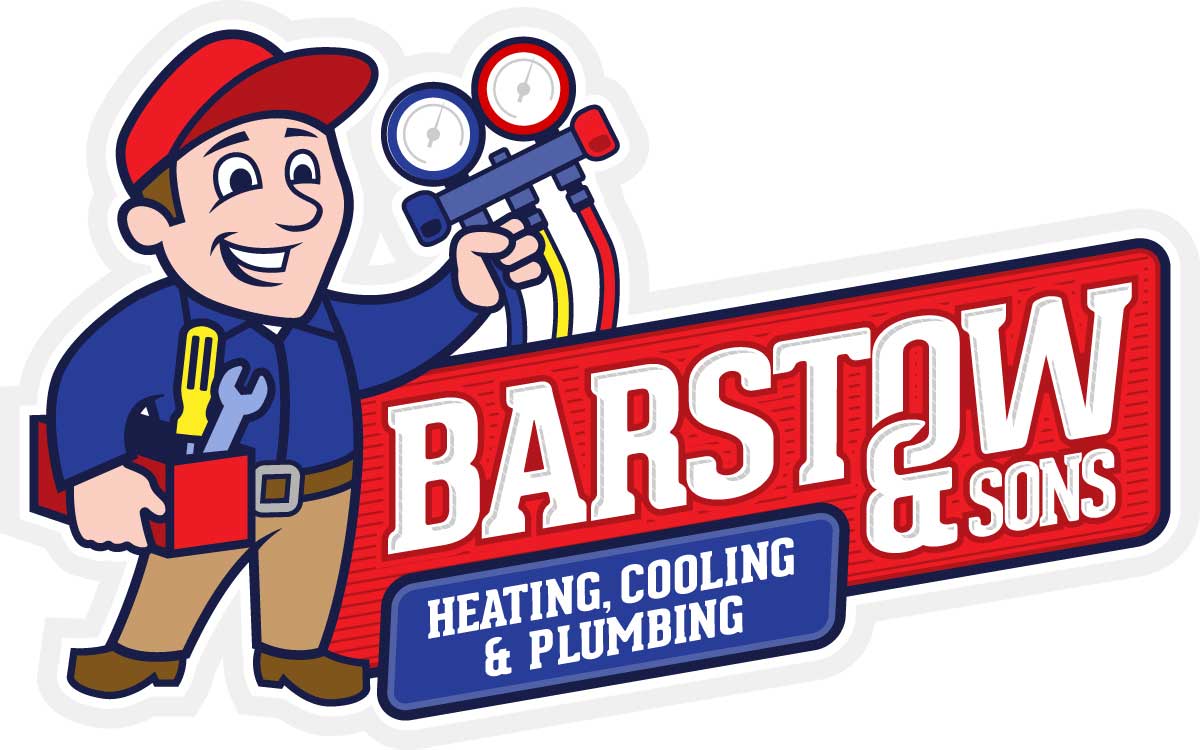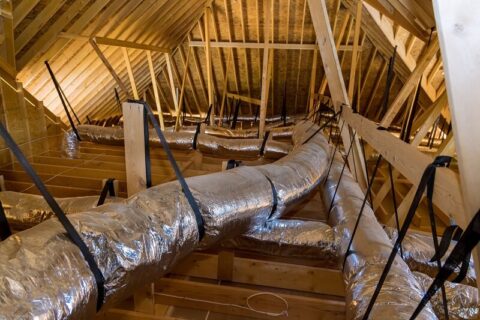Save Money with Proper Ductwork
Your air ducts are like the arteries and veins of your HVAC system, delivering heated and cooled air to keep every room comfortable. While they work quietly behind the scenes, the importance of well-maintained air ducts cannot be overstated. Properly sealed and insulated ductwork ensures a comfy, cozy home and lowers your energy bills. This means if you have leaky or unsealed ducts, you could have a less comfortable home even while paying higher utility costs.
Fortunately, comfort problems and unnecessary expenses are preventable. You simply need an HVAC contractor’s help to seal and insulate your ducts. These ductwork services could save you hundreds of dollars a year on utility costs and avoidable HVAC repairs.
Designing and Installing New Ductwork
The quality of your ductwork stems from how it’s designed and installed. A well-thought-out duct system distributes air efficiently and keeps a tight lid on leaks.
Where to Install New Ductwork
Constructing a new home or retrofitting an existing one presents an opportunity to design a duct system that maximizes energy efficiency. In the past, installing ductwork in unconditioned spaces like the attic or vented crawlspace was common practice. However, modern builds often incorporate ducts and heating systems within the conditioned living space to minimize energy loss. A neat trick is to conceal ducts in dropped ceilings or room corners. They can also be housed in a sealed and insulated chase extending into the attic or built into raised floors.
Ductwork Configurations
While there’s no one-size-fits-all ductwork layout, the trunk-and-branch and radial supply duct configurations are often a good fit. For the air return system, you have two viable configurations—either each room can sport a return duct channeling air back to the HVAC equipment, or one central return grille can be situated on each floor of the home.
The Golden Rule of Ductwork Installation
Regardless of where you install your ductwork or what installation configuration you choose, one rule rings true: never use chases and floor cavities as makeshift ductwork. Instead, install dedicated sheet metal, fiberglass, or other suitable duct materials that can be properly sealed to prevent energy loss.
Maintaining and Upgrading Your HVAC Ductwork
It doesn’t take much to maintain your ductwork if it’s already in good shape. First, make sure your registers aren’t blocked by furniture, rugs, curtains, or other objects. Keep all return vents and at least 80% of supply vents open at all times to promote balanced airflow. Then, regularly vacuum the registers to remove accumulated dust, dirt, and hair.
Addressing Return Air Design Deficiencies
It’s not uncommon for existing duct systems to suffer from design deficiencies in the return air system. Making unwise modifications or simply closing too many interior doors could exacerbate these problems, especially in homes with one central return grille.
Rooms with insufficient return airflow might benefit from simple upgrades like installing new return-air grilles, undercutting doors for better return airflow, or setting up short “jumper ducts” above doors. These upgrades maintain the balanced airflow crucial for even temperatures and low energy costs.
What if Comfort Problems Affect Only One Room?
In some instances, rooms might be difficult to heat or cool due to inadequate supply ducts or return grilles. Before jumping to conclusions, it’s wise to address some related issues, such as poor insulation, air leakage, or inefficient windows in the room. If comfort problems persist after addressing these issues, it may be necessary to enlarge the supply duct or add an extra one to boost airflow.
Why is Quality Ductwork So Important?
Preserving the integrity of your air ducts is crucial, especially if they travel through unconditioned areas. Any leaks in the supply ducts force out heated or cooled air through unsealed joints, resulting in energy loss. In addition, unconditioned air may find its way into return ducts through unsealed joints.
On top of efficiency problems, leaky ductwork can take years off your HVAC system’s lifespan. For instance, consider how mixing hot attic air with mechanically conditioned air overworks your AC unit. Longer-than-necessary run times increase wear and tear on the system, forcing you to pay more for repairs over the years. In the end, sealing and insulating the ductwork is a much cheaper solution.
How to Know Your HVAC Ductwork Needs Help
Several red flags could indicate that your ductwork is crying out for attention. Here are the signs that you should check the condition of your ductwork’s seals and insulation:
- High utility bills
- Poor heating and cooling throughout the house
- Limited airflow
- Noisy operation
- Dust, mold, and odors
- Dents and punctures
- Debris around the vents
- Tangled or kinked flexible ducts
- Ductwork installed in unconditioned spaces such as the attic or crawlspace
Ductwork Repair Tips
Sealing, insulating, and repairing air ducts are tasks best left to a professional. A qualified HVAC technician can assess the condition of your ductwork and recommend any necessary modifications or repairs. Still, you can jumpstart the process by following these repair tips.
Assess Leaks
Begin by checking your ducts for air leaks, focusing on separated sections and obvious holes. Duct mastic is preferred for sealing ductwork seams and joints due to its durability and ease of installation. The only downside is that mastic won’t bridge gaps over one-quarter inch. Instead, these must be sealed with web-type drywall tape or high-quality, heat-approved tape.
Check the Insulation
Determining the ductwork insulation level is next on the list. Ducts located outside the building envelope could be sucking the efficiency out of your HVAC system. Insulating sheet metal or fiberglass ducts to about R-6 effectively locks in the heated or cooled air traveling through them.
Schedule Ductwork Services in Annapolis or Pasadena, MD
At Barstow and Sons Heating and Cooling, we provide a complete array of ductwork services, including installation, sealing, repairs, and cleaning. As a local, family-run business with over 40 years of experience, you can trust us to recommend the best solutions for the most efficient ductwork possible. We pride ourselves on delivering stellar customer service and fair, affordable prices. Don’t let damaged ductwork put a damper on your indoor comfort—call us today at 410-777-9185 to schedule ductwork services in Annapolis or Pasadena, MD.


